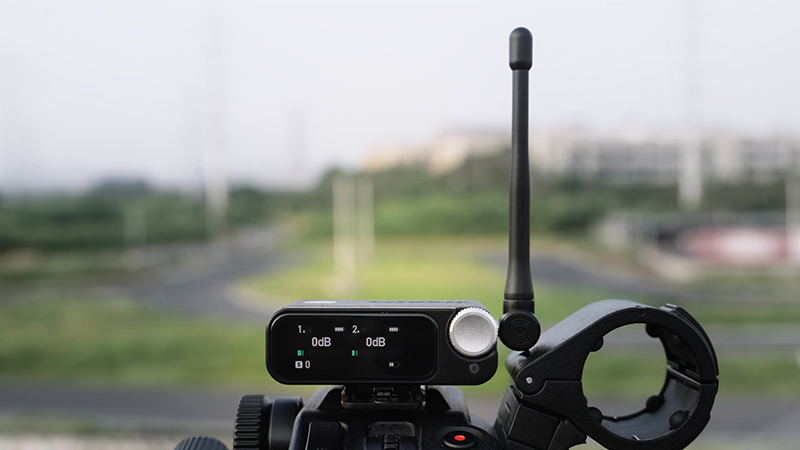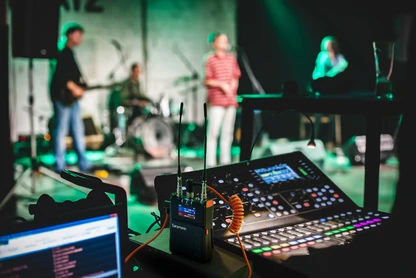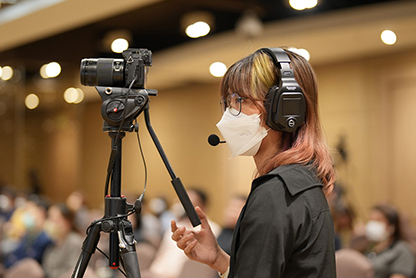Choosing a suitable wireless microphone is bewildering. They exist in many forms, with many features and technical jargon, so it's hard to know what to look for. Yet for those who create, present, or perform, good and clear sound is vitally important.
This guide simplifies everything step by step. We'll discuss the basics, explore key features, and walk you through choosing the right microphone for your profession and budget. By the end, you will be able to pick your next wireless microphone with complete confidence.

Before we go shopping, let's cover the basics. Getting the basics down will make the rest of the process easier and enable you to know what you're shopping for in a wireless microphone system.
The physical form of a microphone is designed for a specific job.
A wireless mic system is a small radio station. It has two parts: the receiver and the transmitter. The transmitter is the part that you hold or wear (like a handheld mic or a bodypack plugged into a lavalier mic). It takes your voice and sends it out as a radio signal.
The receiver is the component that is connected to your sound mixer, phone, or camera. It is tasked with picking up the signal from its corresponding transmitter, decoding it back into sound, and sending it to your recording device. High-quality systems do this with imperceptible delay.
This is the "highway" that your audio signal is on. UHF (Ultra High Frequency) is the professional standard. It is as if you have your own multi-lane highway for your audio. It goes farther, sounds better through walls, and receives less interference from other devices. However, it's more complicated and usually pricier.
2.4GHz Digital systems use the same frequency as Wi-Fi and Bluetooth. It's a busy public road. These systems are easier to use and cheaper, making them perfect for indoor vlogging and simple setups. The trade-off is a shorter range and a greater chance of interference in busy areas.
You don't need to be an engineer, but knowing these three terms helps a lot:
Once you have a notion of the basics, you can begin to compare models. These are the major performance variables that distinguish a great wireless microphone from an average one.
Sound quality is subjective, but you'll want to check for two things: clarity and warmth. Clarity is when the vocals sounds clear and easy to hear without being sharp. Warmth is when the sound sounds nice and full without being weak or metallic. The best thing to do is to check out online video reviews where you can hear audio samples that have been recorded using the microphone you are considering.
The range is how far the receiver is from the transmitter before the signal no longer works. Think carefully about what you need. The 50-100 feet range is adequate for home or small-studio vlogging. For big halls like conference rooms, churches, or outdoor wedding videos, you'll want a system with a 300-foot or greater range to make sure the connection is good.
Don't have a dead battery ruin your shoot. A few systems have rechargeable internal batteries or draw from standard AA batteries. Internal batteries are convenient (you just plug 'em in), but if you lose power during an event, you're stuck waiting for them to charge up. AA battery systems allow you to switch to fresh ones in a flash, which can make a big difference for lengthy events.
A product's material dictates its longevity. Less expensive systems are made of plastic. Plastic is not heavy, but it can crack or break if dropped. Professional wireless microphone systems have metal casings. These cost more, but they can survive everyday bumps and drops and provide additional shielding against electronic interference.

The best wireless microphone is the one that fits your workflow. Here’s a breakdown of recommended setups for common use cases:
Price often reflects reliability and features. Here’s a general guide to what you can expect at different budget levels, regardless of the brand.
In this range, you’ll find single-mic 2.4GHz systems, usually with plastic construction. They are a fantastic starting point for hobbyists, casual vloggers, or anyone on a tight budget. They get the job done for simple, close-range recording.
This is the sweet spot for many serious creators and small businesses. You’ll find more reliable systems with better build quality, longer range, and improved sound. Dual-channel systems, which can handle two transmitters at once, also become common in this price bracket.
When your audio absolutely cannot fail, you need a professional system. These kits feature robust metal construction, superior UHF technology for rejecting interference, and advanced features for managing multiple microphones in complex environments. This is the territory for professional broadcasters, filmmakers, and live sound engineers.
Buying a great wireless microphone is only half the battle. Using it correctly is what guarantees clean audio.
Modern systems are surprisingly easy to set up. In most cases, it's as simple as turning on the transmitter and receiver, and they will pair automatically. For more advanced UHF systems, you may need to press a "sync" button or perform a quick frequency scan to find a clear channel, a process that usually takes less than a minute.
Most problems can be avoided with a few simple best practices:
Ask yourself these questions to make sure you’re making the right choice:

Choosing the best wireless microphone comes down to understanding your specific needs and matching them with the right features. By focusing on your primary use case—whether it’s creating YouTube videos, conducting professional interviews, or performing on stage—you can confidently select a system that delivers. Remember that investing in a quality tool and learning how to use it properly will pay off with clear, professional-grade audio every time. Now you have the knowledge to cut the cord and capture amazing sound.
For big events, UHF mics provide ideal range and penetration beyond walls. Usually less expensive, 2.4 GHz performs well for close-range indoor use.
Indeed, every speaker needs his own transmitter. If you're going to record groups, make sure your receiver can manage several channels.
Most contemporary wireless mics interface with both. Just consider the kind of connection—some configurations might call for an adaptor.
Absolutely! Just search for versions resistant to weather and guarantee good signal strength. Usually, outdoor performance of UHF systems is better.


